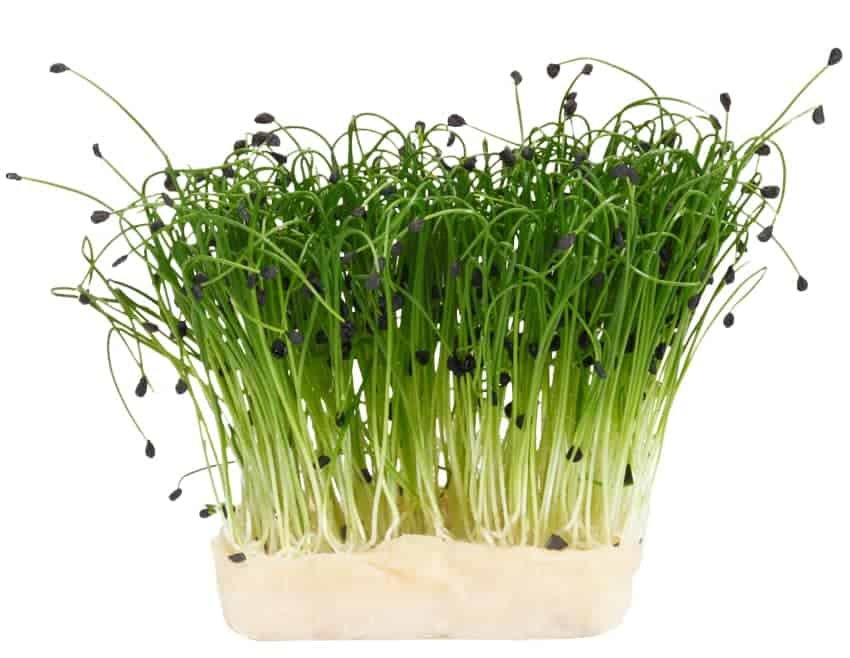top 10 Most Profitable Microgreens In The Us
It seems that in the last several years, the populace’s tastes required more fresh and vitamin-infused produce that made microgreens, tiny nutrient-rich versions of green leaves and herbs very popular. However, microgreens kind are not only liked because of their powerful flavors and bright colors, but they have nutrition areas, and that make them a desirable substance in salads, sandwiches, and high-quality dishes alike. Profitable initiatives for startup entrepreneurs and urban farmers who seek business endeavors might mean a microgreens nursery.
In this article, we’ll dive into some of the most profitable microgreens in the US. Options, which enlighten people on the cultivation facilities, market demand, as well as income. Regardless of whether you’re a bona fide grower wanting to sap the field wide open or a passionate beginner longing to experience a taste of the appealing world of specialty crops, finding out the most profitable microgreens might be the key to the successful advent in the thriving sector of fresh produce. Now, let us find out which are the most profitable microgreens in the US.
10 Most Profitable Microgreens in the US
Basil
Basil microgreens are in great demand for their very strong taste and fragrance which cooks appreciate greatly and so they are shipped to many destinations around the globe. These are versatile and used in a variety of cooking methods: in Italian food, salads, sandwiches, and garnishes.

Pea Shoots
Pea shoots are magnificent small green powerhouse microgreens that taste like refreshing peas. They are added to salads, stir-fries, and topping dishes, to mention but a few.

Sunflower
Heaps of sunflower microgreens have a robust taste and a slight hazelnut flavor. They are multifaceted and provide the needful vitamins and minerals meaning that they can make any meal richer in terms of healthier affair.

Radish
The miniature radish versions are used in meals in the same way as full-size radishes and offer a spicy zing as well. Most times, they are used as toppings for salads or are further chopped to add more flavor or texture to the dishes. These are one among the most profitable microgreens in the US.

Broccoli
Broccoli tortillas are full of nutrients and have a salty broccoli flavor. They are popularly incorporated in salads, sandwiches, and smoothies, and hence, act as an important calorie source.

Arugula
Arugula-based microgreens can be slightly bitter with a greenish color and this pinpointed flavor is what makes them unique. They come with their powerful taste to these foods; salads, sandwiches, and pasta dishes.

Cilantro
Sometimes cilantro microgreen has an intense flavor similar to vigorous cilantro, but it is much lighter. They are frequent in Mexican, Asian, and Middle Eastern cuisines, they add both the garnishing role and the flavor to the food.

Kale
Kale microgreens are very desirable as far as their nutritional content is concerned and they have a mild and slightly sweet taste. This concept consists of the use of such ingredients for instance in salads, smoothies, and sandwiches for the sake of health.

Mustard
The fresh, spicy, peppery taste of mustard microgreens compliments and electrifies plates with a little kick. They often appear as garnishes, they are components of salads, in addition, they act as toppings for burgers and sandwiches.

Chives
Chive microgreens have a slight oniony flavoring and usually are added as a garnish for soups/salads and omelets. Colors and dishes are also added to make them appealing to the eyes and taste respectively. These are one of themost profitable microgreens in the US considering the people’s preference.

5 Microgreens You Should Avoid Growing In US
We have known about the most profitable microgreens in the US. Now, let us find out which microgreens are least preferred. The are a few kinds of microgreens that may not be as well known on the US market as the others due to different reasons why people may have different tastes, there are plenty of alternatives on the market that are just as common or have limited culinary uses. Here are a few examples of microgreens that may not be in as high demand compared to others. Here are a few examples of microgreens that may not be in as high demand compared to others:
Sorrel
The microgreens of sorrel resemble their mature with a tangy sour taste. Although they can add the unique freshness of flavors to the dishes, they cannot stay the best-sellers ones as compared to other microgreens because of the taste which is not suitable for everyone`s palate.
Fennel
Fennel microgreens are very dynamic, they have the taste of a plant root but with the smell of licorice. But they can be added as a garnish or flavoring agent, their characteristic taste limits their universal accessibility.
Shiso
Shiso Microgreens with the name of ‘Perilla’ has a mysterious flavor that sums up the taste of mint, basil, and anise. Whilst Asian foods are the most popular in this cuisine, their application is still lacking in main Western culinary, thus they create a low demand in the US market.
Chervil
Chervil microgreens are very slightly bitter with parsley-like and anise impressions. Although they can serve as an addition to exotic dishes or be used as a garnish, the subtle taste of some microgreens might not bring about their popularity as compared to others that have distinct flavors.
Celery
The microgreens from celery sprouts have a mildly flavored taste, frequently they add pomp to a dish or make a nice addition to salads. Condensed in size, jicamas appear shaped more like spirals rather than disks. They are more likely to be nutrient-dense and, therefore, beneficial to the body.
Demand for microgreens in the US
Health and Wellness Trends
Instead, a more obvious step is to shift to healthier eating practices, which currently involve cutting down on trans-fats and artificial sweeteners and focusing more on green leafy like microgreens. These edibles are celebrated for their numerous vitamins, minerals, and antioxidants found in them that are health icons suited for strengthening of the human’s diet.
Gourmet and Culinary Trends
With chefs and home cooks being equally enthusiastic about microgreens for their intense flavors, vivid colors, and delicate texture, these miniature vegetables have found admirers for their unique flavors and natural presentation making them a sought-after ingredient in top kitchens. They are frequently served as lettuce, onion, and spinach, to name a few, and desirable in many dishes, both given their beauty and mouthwatering flavors.
Sustainable Food Movement
Not only is there a greater demand for local and eco-friendly produce growers but also it tends to be in a high demand among consumers. Microgreens can be cultivated year-round inside different types of indoor and controlled environments, this can also assure the availability of the product for consumers in many months of the year when the direct production of vegetables is limited.
Convenience and Versatility
Microgreens are practical as they can effortlessly be grown, picked, and aid in meal preparation. To start with, they require no further preparation in the form of roasting or peeling and are ready to use straight from the pack, giving an added convenience to those hurried individuals who are looking for healthier options.
Increasing Availability
In general, tomatoes are going to be more widely available to purchase in retailers, farmers’ markets, and specialty food shops across the country. What is more, the number of residents who grow microgreens at home has grown significantly to the point where it is only another source of demand for seeds and growing supplies.
Is Growing Microgreens Profitable in the US
Rising Awareness
In the long run, the power of education would rise, as more consumers get interested in microgreens and their nourishment potential. Media coverage such as chef specials, eating guide magazines, and social media celebrity chef endorsements have helped in raising the level of awareness on the ingredients and nutritional qualities of microgreens.
High Market Demand
Covering a healthier eating is more frequent and the foods coming from or produced in the neighborhood are widely recognized in the United States. Microgreens, which contain substantial nutrients and superior flavor to other produce, are gaining popularity from several categories of consumers; they include food establishments with gourmet chefs who strive to source only the very best ingredients from local growers, health-conscious consumers, and specialty food retailers.
Quick Turnaround
Microgreens are usually quick to grow, and it range from 1 to 3 weeks or even days on the variety. Thus, this fast turnover, while increasing yields, offers the potential for several harvests during a normal year with adequate weather conditions.
Small Space Requirement
Microgreens can be grown inside or in relatively small outdoor spaces, therefore, they can become the popular option for both urban farmers and individuals engaging in small-scale business. These keep initial investment costs and place for farmland cultivation down to the minimum.
Low Startup Costs
In contrast to the high investment required in growing other crops, the expenses associated with microgreen production become trivial. Starting a grow operation is relatively inexpensive because rooking entrepreneurs are supplied with most of the necessary equipment including trays, growing medium, and seeds, allowing them to affordably make a market entrance.
Conclusion
This is all about the most profitable microgreens in the US. Yet, some varieties always take the lead as top lucrative options. Organic micro-greens bring not only exotic flavors to life with the help of basil and arugula, but they also contain extremely high amounts of nutrients in such small plants as pea shoots, broccoli Green Liter. The grazing behavior of some sheep is liked by chefs and health-minded buyers thus making this the right field to venture into for profit generation in the agricultural sector. Whether it is choosing the most sought-after varieties perfecting cultivation methods, or spotting market trends and population’s needs, the growers can position their business better as they brace for the competitive microgreens market.
What according to you are the most profitable microgreens in the US. If it is a main business or a great addition to other existing agriculture operations, microgreen represents a good opportunity that one can get more profit and respond the growing hand – to – mouth food production in a sustainable way. Along with the education of consumers aware of the health benefits, great taste, and sustainability of microgreen consumption, the sector of this market that grows quickly can offer profitability. Advancing in innovations, steadfastness, and commitment to quality, the growers can also grasp the chances brought forth by microgreens too, and create a rich future for themselves in the fresh produce market.







